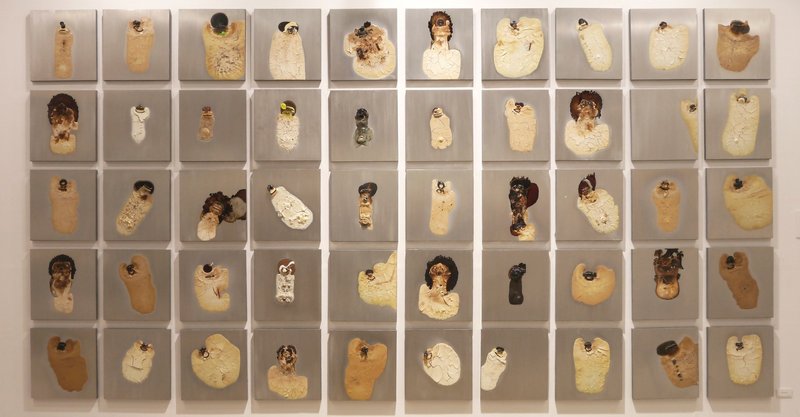
Interview with Yohei Nishimura: How Irreplaceable is it to “Simply Exist There” Exhibit at Gallery Kazuki
"artTNZ", which was held from September 17 to September 21, 2020 brought together a total of 42 contemporary art galleries. It was a collaboration represented by leading domestic & international art galleries in Japan and those specializing in the works of young talented artists. However, due to the Coronavirus pandemic, admission was restricted and opportunities to come in contact with the works were limited. In order to convey the character and charm of the works to as many people as possible, Art Scenes interviewed three individuals: an artist; a collector; and a gallery director. In addition, at this time a limited number of works at Art Scenes will be for available for purchase. We hope that this will allow more people than ever before to enjoy art.
Gallery Kazuki is a planning gallery that handles contemporary art in a corner of the Okuno Building in Ginza. Yohei Nishimura, an artist who belongs to this group, uses a technique called “shosei” (from the Sino-Japanese characters “焼成” literally meaning “become-from-burning”) to create works that work on various human perspectives. With his unique world view, he is considered one of Japan’s leading artists and his work is extremely popular. Many museums in Japan and abroad, such as the National Museum of Ceramics (France), the Victoria & Albert Museum (England), and the Tokyo Museum of Contemporary, have a large collection of Nishimura's works. Even now, at the age of 73, he is continuing to work vigorously and plans to introduce 50 new pieces. Mr. Nishimura is among the three individual s interviewed; the others include Ms. Hitomi Kazuki, the owner of the gallery, and Ms. Noriko Kondo, an art collector.
Yohei Nishimura, Artist
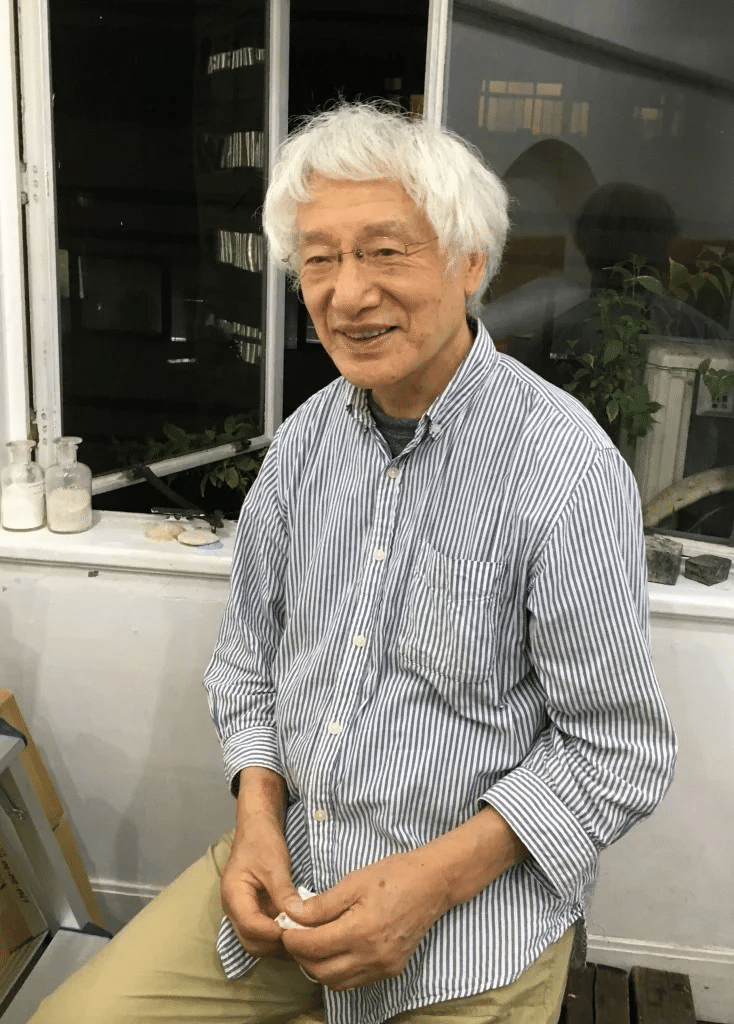
Q: Mr. Nishimura, please tell us about your work.
Basically, I’ve always tried to show a completely different world by altering things through heat. I like, you know, material “things”. I mean, clay is hardened by fire, right? Clay was originally soil. So when it becomes a finished product, and it becomes clay again . . . what we are looking is not the essence of that "thing". When I was a student the first thing I burned was a Coca-Cola bottle cap. It was a king’s crown, but after I baked it, it turned into a ball. Take stone, for example — of course it’s hard but with enough heat it melts.
Even when baked at the same temperature the same material will sometimes melt and sometimes it won’t. At any rate, soil and rock are essentially the same. If the soil turns brownish it’s because it contains a lot of iron and ordinary pottery is made by removing the iron. And if you mix it it with soil it will turn blackish. But I don’t really think of things like that. Everything is connected. And when you look at something in its true state you can see the interconnectedness of everything.
Q: Mr. Nishimura, you majored in sculpture at university, right? From there why did you decide to divert from making sculptures and start creating works by baking things?
At art schools everyone is good because various techniques are taught and that’s where everyone enrolls. Everyone creates the same thing so it is what it is. You can’t really evaluate something unless it’s something that only one individual can create. So at school, I made works out of clay while looking at the models, but I wondered if that was “expression.” So I started thinking: “What is the right path for me?” “What is expression?”
We often say, “be yourself”, right? The modernism “be yourself" means to find and reveal your own essence, right? I feel the individual has no existence unless they reveal their own essence. Everyone writes and creates with their own hand but since college I’ve always wondered if that’s really true. So I’ve thought about what I can do and what I can create but regardless of what I do traces of myself always came out. But by burning things I can extinguish all traces of myself. So I use this technique as a method to erase myself and exist as an individual.
Q: How about burning stones and teacups together? When did you start this experimental technique?
When I was a university student, it was the worst time to be going to college and I couldn't properly attend classes. So the distance between me and the sculpture room widened. I graduated and did this and that but didn’t have a real career. But I still had the feeling that I wanted to create something. But if you don’t have any material to work with you can’t create anything that will remain. So I started with things that were close at hand, like newspapers, for example.I knew I couldn’t make any progress by just thinking . . . and while doing one thing, another idea would pop into my mind. I’d finish something, and then right after that I’d start something else. It was like one thing after another.
Q: Wanting to create but wanting to erase any traces of yourself, a contradiction . . . a conflict . . . very interesting! When did you start making works of art with books?
In the 80s, I guess? At first I thought I’d like to create something that lasts out of paper but if you burn paper it just burns up and disappears so I thought why don’t I spread clay on it and maybe the paper will still be there. What do you think it was?
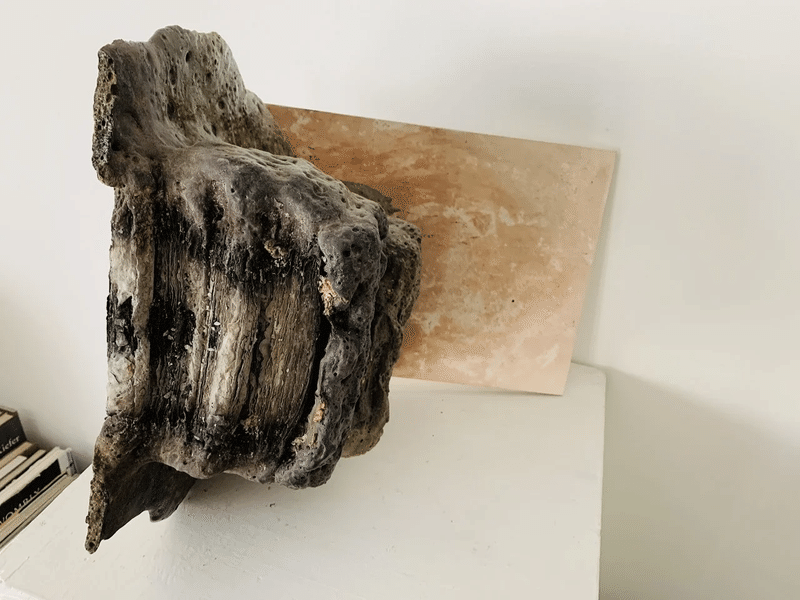
It was the manga magazine “Shounen Jump”. I spread clay on it and burned it and even the parts not coated with clay remained. By chance I discovered that even paper can resist fire.
Q: Why do you use Iwanami books?
Well, only Iwanami books have cover patterns that resist fire. The books have been around since when? the second year of the Showa Era almost 90 years ago? For me it started from their books and I just kept at it.
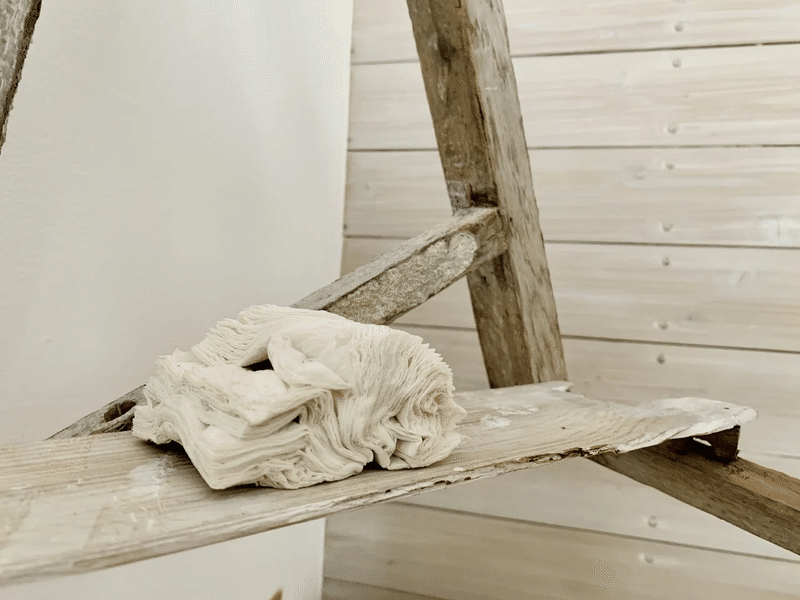
Q: Is there any difference compared to the old days?
I often think the paper quality has really changed. It also depends on the temperature. Iwanami was publishing books in the 16th year of the Showa Era. At that time they were publishing books by l’Isle-Adam. He used a lot of symbolism and he was a really aesthetic writer and poet. It was the very year when Japan attacked Pearl Harbor. It was a time when Japan was all-in for war, right? To think that Iwanami was publishing l’lse-Adam’s books during that era is pretty amazing.
Q: Mr. Nishimura, when you started creating your art in the 70s your work gave the impression of an artist who was about, and into, things. When you say you wanted to remove all traces of yourself was it because being an things-themed artist was not right for you?
Things are what they are, right? A stone is a stone.I wanted to make things that make you think a little more. If you’re not given any information about a way of thinking you won’t be able to understand it. For example, if you see a cleaning woman at an art museum looking at a baked book and she asks you what it is and tell her, “it’s a book, it’s a baked book!” she will be surprised. “It’s paper but it doesn’t burn?!” And you say, “no it burns. It was baked and that’s how it turned out like this!” As for me, if someone sees something and doesn’t think it’s weird or mysterious, if I didn’t have a different approach, it would be boring. It’s interesting to see something as really real, and, yeah, that’s interesting. But then it’s over. I wanted to expand into a somewhat different world.

Q: Please tell about some of your recent work. For example, what are these?
They’re plastic bottles.
Q: Plastic bottles!?
Basically they’re plastic bottles melted with heat over aluminum. They’re plastic bottles but each bottle has a name attached to it. For example, “Healthy Body Tea” or something like that. I properly attach the label to the bottom of each bottle and that becomes the title of each piece.
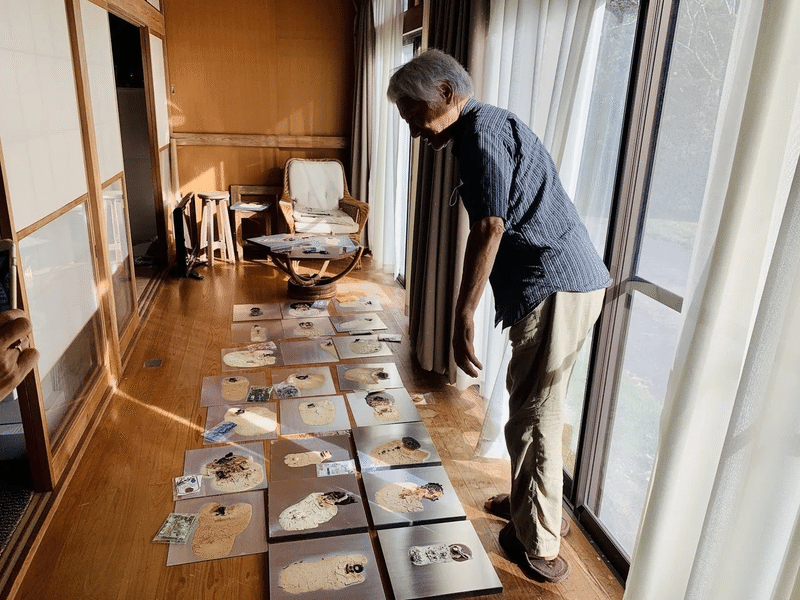
Q: Even though they are the same plastic bottles, each one is interesting and has its own personality. About when did you start making these pieces?
Recently. From around last year, I guess. At first I was using aluminum cans and plastic bottles. The reason I started doing things with aluminum and plastic here is that cans and bottles accumulate. The place to dispose of them is really far away. So I thought I have to something with all these plastic bottles and things and I started making these. Then, when I was walking around the area here around my studio one day I noticed there were plastic bottles and cans everywhere, even though there weren’t many other people around. So I wondered if there was anything I could do to in the area as well.
Noriko Kondo, Art Collector
Q: Could you please tell us about how you started your collection? Have you always been an art lover?
I’ve never gone to an art college and I don’t have a deep knowledge about the arts but I’ve always liked the world of pictures and paintings. My father was an aspiring painter and whenever I watched his back move while he was painting I felt like another world existed. There were art books in our home which I often looked at and *my family often took me to art museums and galleries. At first I only looked at famous works but at some point something hit me and my own taste developed. Gradually I began to see what I wanted to see and what I liked. In life many things don’t go as you expect. There was a time after I got married and had children that I was in a dark place but I came upon a painting and it was like we made a connection and communicated. I feel like that painting has been wrapped around my heart ever since then and it’s still with me. From then I started buying various pieces and during the “Bubble Economy” I bought some high-priced works, too. But among those there are some that I eventually got bored with. So I started thinking I should try to find things that “wow" me when I come face to face with them. At that time I came upon Ms. Kazuki’s gallery. I sometimes purchase the works for sale in her gallery but for me the exciting part is attending the exhibitions which are very interesting. I always go to them wondering what will be next.
Q: You run a cafe gallery, right?
It’s a cafe gallery called "Linden" on the hill leading from Moegino Park to Sakuradai. I opened it in 2011. I wanted to create a place where people could discover what they liked while leisurely enjoying a cup of tea, a place where art enthusiasts can connect with others without having to make a long commute to an art museum.
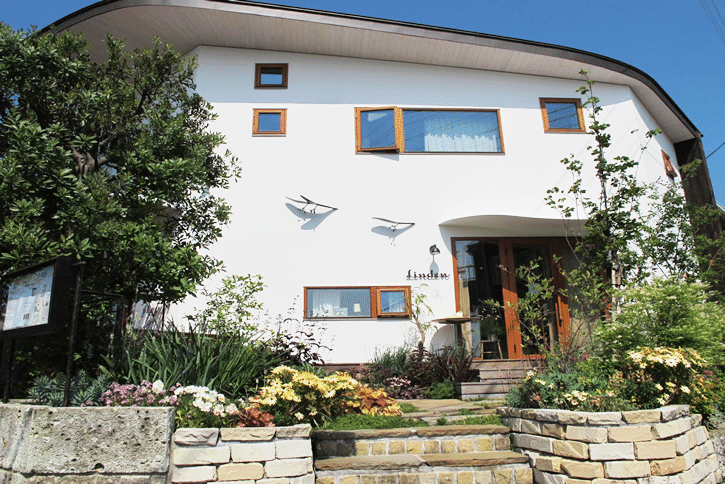

Q: Was Gallery Kazuki where you saw Mr. Yohei Nishimura’s works? Do you remember that experience?
It was around last year. Ms. Kazuki was holding a group exhibition there and that’s where I saw Mr. Nishimura’s work. At that time I didn’t know anything about him but I was shown several of his works from his “Paperback” series. I thought, “what’s this!?” and couldn’t think of anything to say but knew that if I had some of his works I would never get tired of them and never regret buying them. All at once I was moved and full of curiosity.
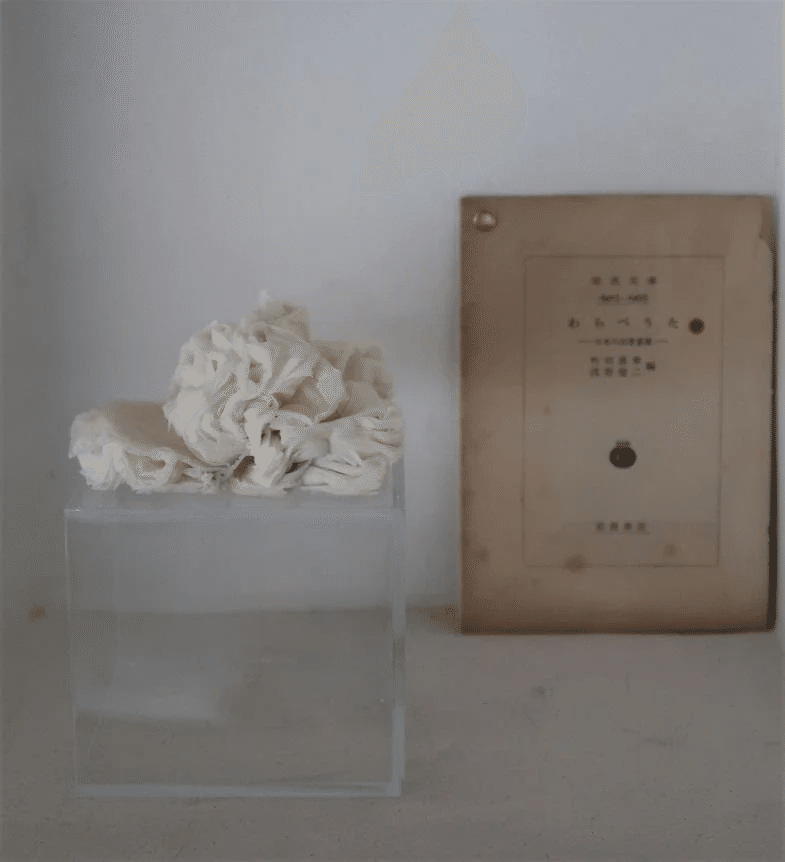
《岩波文庫 わらべうた》近藤さんのコレクションより
Q: What makes Mr. Nishimura’s works so interesting?
Mr. Nishimura's work borrows from the power of nature, and I thought that he wasn't trying to do this or do that; I thought that he was a person who had a great affection for "things” as they are. So firstly, I thought his view of the world was wonderful. The materials of his creation are things that have been thrown away. But the finished work is something transformed and elevated into another something, and it makes you see the beauty of life living in ordinary things.

《岩波文庫 わらべうた》近藤さんのコレクションより
Q: Is there some kind of decisive factor when you purchase a work of art? Do you have anything like a buyer’s policy?
Well, price is important. I can’t overdo it when it comes to the actual purchase.
But in my case I think it’s okay to know that sometimes I will make mistakes. Because if I don’t make any mistakes my eye won’t get any better. There have been times when I’ve spent a large sum on something and later realized I’d made a mistake but I’ve never thought it was a waste. Recently, I’ve been setting an upper limit for myself and I buy about 2 to 3 items a year. I want to see things that make me excited and I want to see new things, and I have decided that I would like to welcome home those works when I come across them.
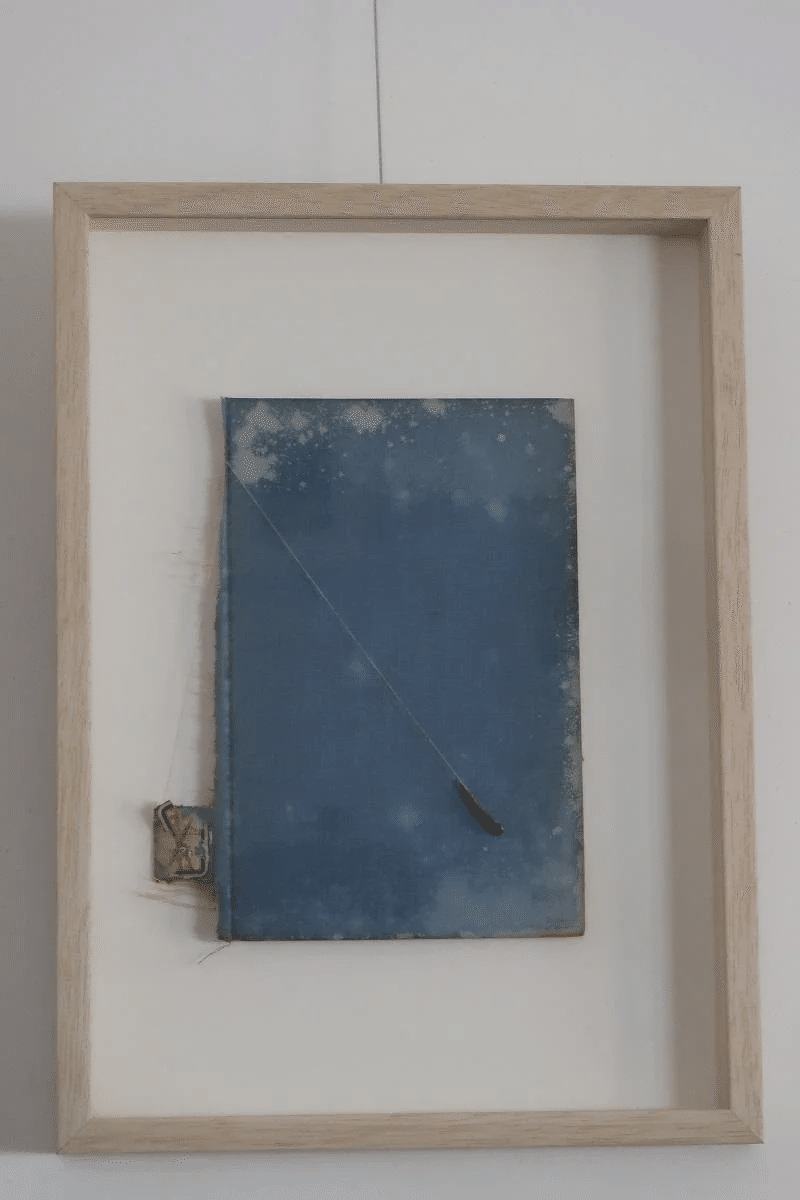
近藤さんのコレクションより
Q: For you is it more important to think about the pleasure the pieces will give you when you face them later in your home than the first impression you get when you see them at galleries?
Yeah, for me it’s about how the work will always communicate with me honestly and give me joy and excitement. Because they’re things I will see every day. The painting and I grow together. Out perspective changes together and I want to own pieces I can imagine being happy with 3 years from now, 5 years from now. I look at art from the perspective of whether it will continue to excite me every day and I want those works which echo most loudly in my heart. I think buying a painting isn’t a monetary investment, but an investment in yourself to reach a higher place.
Hitomi Kazuki, Gallery Owner
Q: Could you please tell us about the charm of Mr. Nishimura’s works?
When I visited his studio for the first time in the summer of 2019, the beauty of his “shosei” or “fire-baked” works revived old memories, and I heard a voice in my heart saying, "Please ‘shosei’ me when I die." But the teacher in me spoke up and changed the topic by saying, "Let's have an exhibition!
In an era when books are turned over as often as pages of lonely books on bookshelves are never turned, they’re treated according to people's desires and discarded when they are no longer needed.
The books, empty cans, and plastics bottles found by Yohei Nishimura can live another life again through his “shosei” technique. The books will live theirnext lives semi-permanently as they choose. Even after we’re gone, the things he re-created through fire will continue to live there in silence.
Sending the Jews to the gas chambers meant death, right? The books and plastic bottles found by Yohei Nishimura recreated through fire don’t die; they remain. They continue to simply silently be there in the form of their own choice. They can continue to exist and take on a new life forever.
I felt how irreplaceable it was to “simply exist there.” “Can you hear the voices of the things recreated through fire?”
Q: How about the first time you came across Mr. Nishimura’s works?
It was 30 years ago when I was opening Gallery Kazuki. I discovered his work at the Yohei Nishimura exhibition at the Museum of Art in Fukuoka and the Mitsubishi Estate Artium. I was so taken at the beauty of the things created through his “shosei” or reformed-though-fire method that I couldn’t speak.... When I was preparing to open my art gallery with another opening artist, Mr. Nishimura wasn't around so decades passed without making a connection.
In the fall of 2018, when an acquaintance who came to my gallery and asked me, "I'm holding an exhibition for people with disabilities at the Okuno Building, would you like to speak there?" I was nailed to the work in an acrylic box. “These works are by Yohei Nishimura! Why is he here? I'm an artist who had always wanted to meet him.” "Mr. Yohei Nishimura is our god, so I put in in a guardian. If you want to meet him so much, I'll introduce you." With that said, the next day I was together with Mr. Nishimura in my gallery. I was really moved!

2020年2月西村陽平展「我ら人生のただ中にあって」にて、香月さんと西村さん
Q: Among the many works and various forms of expression, I guess that just because some works are charming does not mean that you can work with them. Why did you think you wanted to work with Mr. Nishimura?
I don't think art is something that can be created only by artists. I think that the work is created by a relationship of creativity. I think that the way the viewer feels, empathy, the setting of the times, and various other elements bring the work to life and lead it into a new world.
Mr. Nishimura's existence is bottomless. The work of deepening one’s art is like a boy crazy about chemical experiments. I’m always moved by the attitude of nurturing talent while watching over children and people with disabilities. Working with Mr. Nishimura is a test for me. It's a feeling of constant nervousness and therefore a healing experience for me.
with disabilities. Working with Mr. Nishimura is a test for me. It's a feeling of constant nervousness and therefore a healing experience for me.
Q: You started your gallery in 1991, right? So next year will be the 30th anniversary. What is the reason for continuing so far, or what is the source of your power?

開館当時の様子
Many times I’ve thought, “this is enough.” But there is no end to art. I want to feel myself changing and going from each moment to each moment.Shedding begins the moment the things that you didn't notice or left in your memory are replaced.
Q: Your work is one that only produces a kind of art *that can only be called “painting”, but you could also call yourself an “oral reader" since you practice recitation and other forms of expression, right? I would like to hear more about that kind of work. Is it something you have in common with Mr. Nishimura's expression?

「月と太陽 / アリアとカノン」福岡アジア美術館ホール/ 福岡 2016
Mr. Nishimura’s work is “butoh” [a form of Japanese theatre]. It’s a completely different form of expression. Trees and flowers; walls, floors and ceilings; fog, smoke and clouds. Both butoh and reading can meet all the things (the cells, my spirit, my minds ...) in side my body. I want to fulfill all the rare feelings inside my body. I read aloud in order to hear my own voice. In daily life, your body and voice move in order to accomplish your errands and tasks. I want to meet the self that inhabits my body. I'm looking for a way to meet that person by searching for my voice in deep sleep. You may not be able to get home if you’re hidden so deep inside your own body that you can’t get out.It’s at those times that it’s most difficult to run a gallery. A rebellion occurs inside of me and upsets my mind and body. I’m living by going back and forth between the inside and outside of my own body.
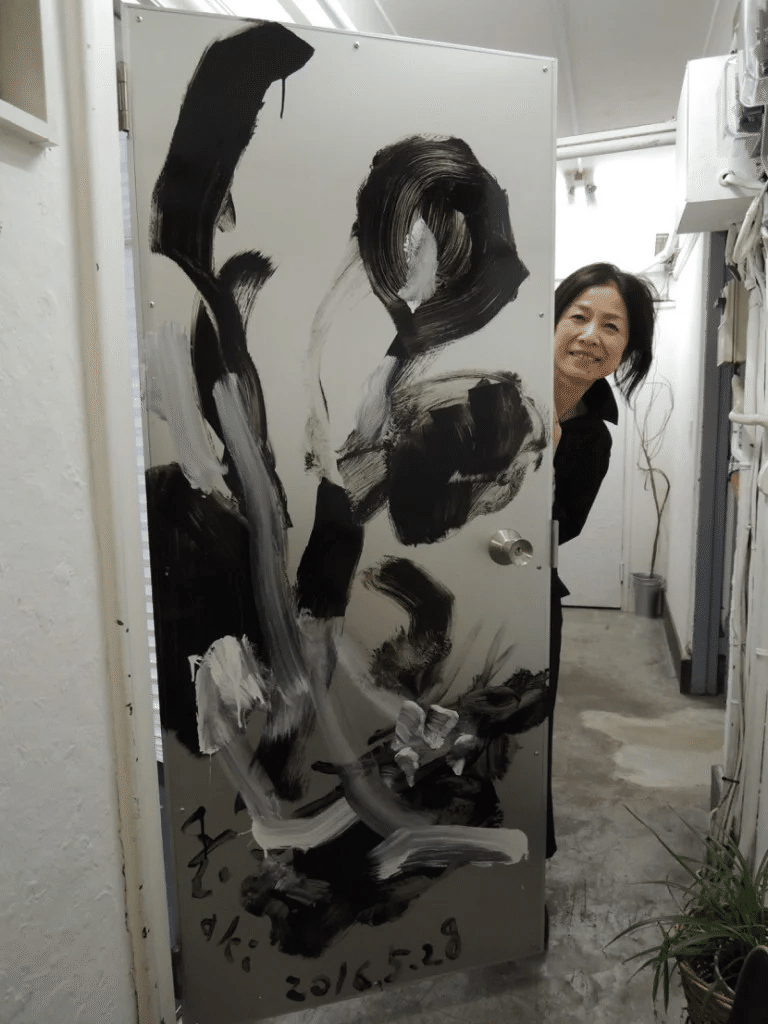
Writer/Editor Postscript
Thanks to Ms. Kazuki’s arrangements we interviewed three people at Mr. Nishimura's studio. Many of Mr. Nishimura's works were on display in his studio. I had a small and light book baked through the “shosei” method placed on my hand; I was surprised at sight of the big black manga magazine “Shonen Jump” work and a new plastic bottle of a shape unlike any other in existence. I can vividly remember everything I saw, every sound I heard,and everything I smelled in his studio. I am truly thankful to Mr. Nishimura, Ms. Kazuki, and Ms. Kondo for having been given this unique opportunity. And I'm really looking forward to seeing the 50 new works; furthermore, there are plans for a solo exhibition in the future!
At Art Scenes, 5 of the works exhibited at the "artTNZ" fair at Gallery Kazuki are currently on sale online only.
Sales are limited to only one month from the start of the fair, so please feel free to contact us if you are interested.
[Sales period: September 17th (Thursday) to October 16th (Friday), 2020]
Art Scenes限定作品①:「古語辞典」by 西村陽平
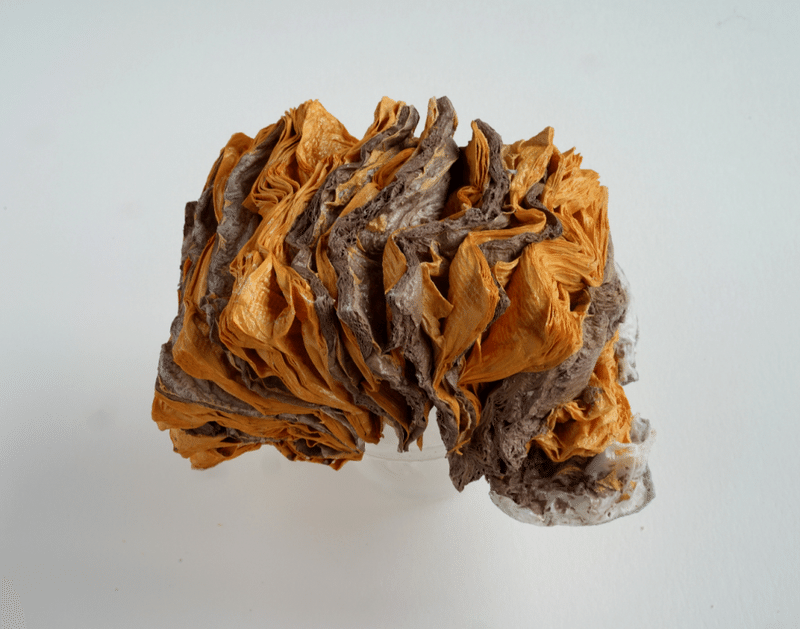
Art Scenes限定作品②:「兎の眼」by 西村陽平
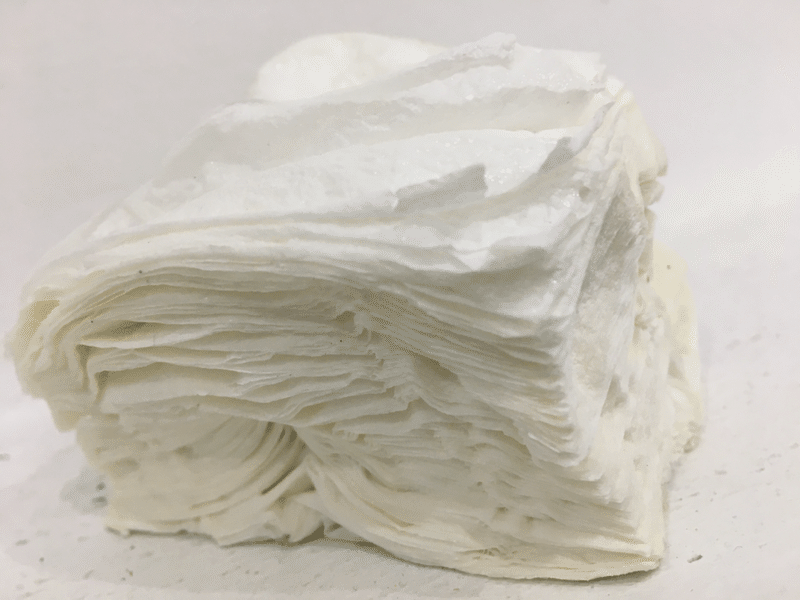
Art Scenes限定作品③:「50 Plastic Bottles_1」by 西村陽平
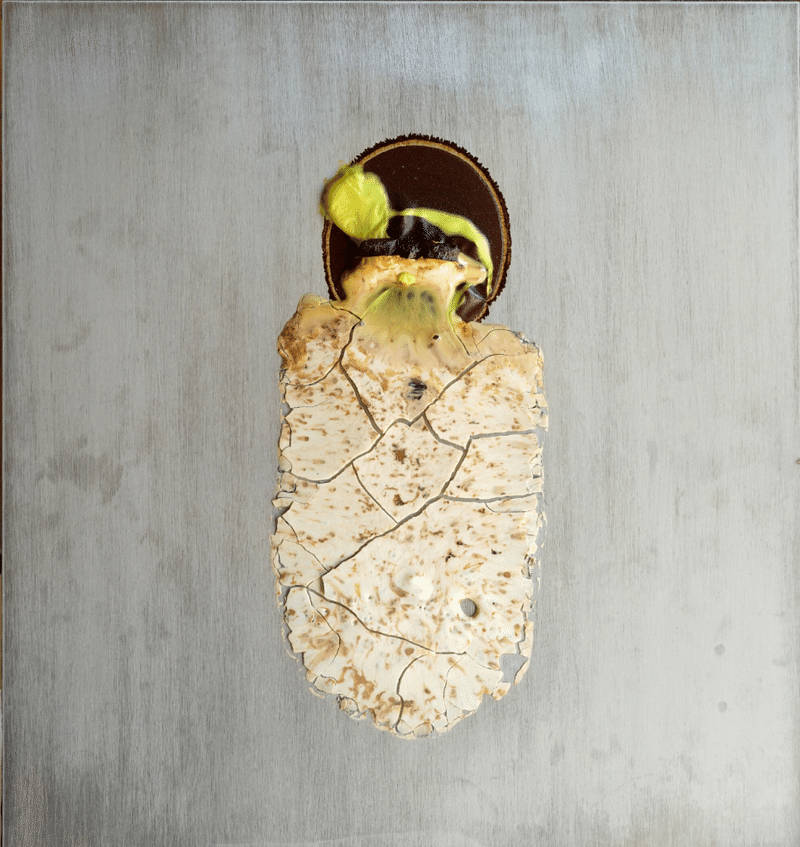
Art Scenes限定作品④:「50 Plastic Bottles_2」by 西村陽平
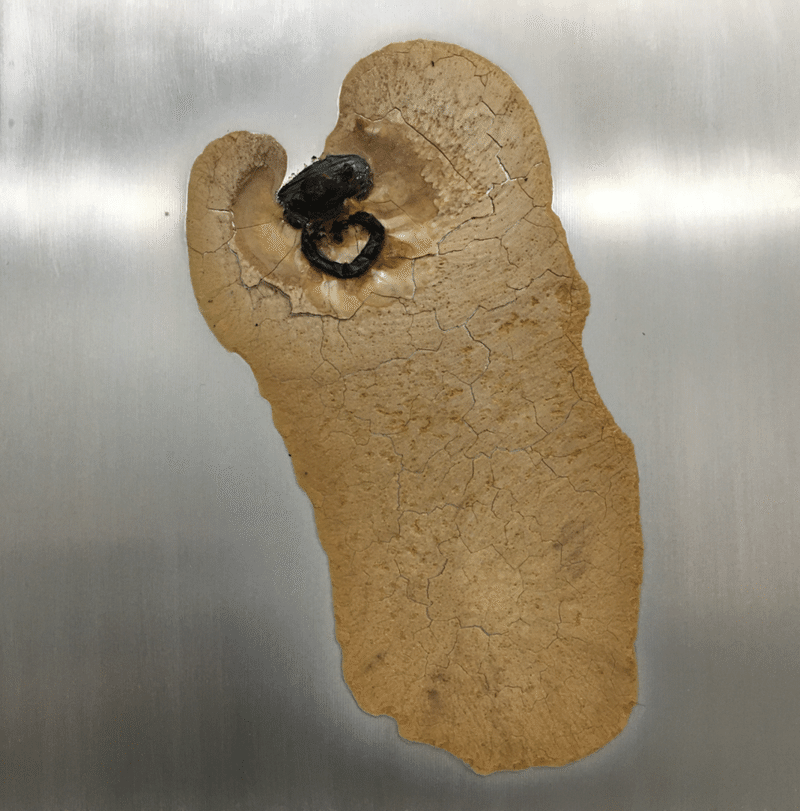
PROFILE
Yohei Nishimura
Born in Kyoto in 1947. Graduated from the Department of Arts, Faculty of Education, Tokyo University of Education. Using pottery as a material, he creates works that work on various human perceptions. He has a large collection of works displayed in museums in Japan and overseas, such as the National Ceramic Museum (France), Victoria & Albert Museum (England) and the Museum of Contemporary Art, Tokyo. He has been a teacher at Chiba Prefectural School for the Blind for 23 years and holds workshops at museums nationwide to create new expressions which extend beyond vision.
Noriko Kondo
Born in 1955. Since May of 2011, she has been running the cafe gallery "Linden". She lived in Germany for 5 years from 1979 to 1984 with her husband while he was working there, and realized that art is alive in Europe. After returning to Japan, she decided to create a gallery as a place where people could meet art in their daily lives.
Hitomi Kazuki
Gallery Kazuki owner, oral reader, and art director. Born in Fukuoka. In 1991, she opened “Gallery Kazuki" in Fukuoka City. Art, music, poetry, butoh, and collaborations with artists from different fields are spotlighted. In 2011, she opened the Art Gallery Kazuki in Ginza. In 2016, she became the executive director of Art Fair Asia. Lives in Tokyo.
Writer Introduction: Moeka Suzuki
Born in Tokyo in 1996. Completed the Master’s program at Joshibi Women’s University of Art and Design. Since she was in university, she has specialized in the history of contemporary art in the 1990s.
【関連サイト】
画廊香月
西村陽平 Art Scenesページ
【ART SCENESより紹介/著者:鈴木萌夏】
この記事が気に入ったらサポートをしてみませんか?
